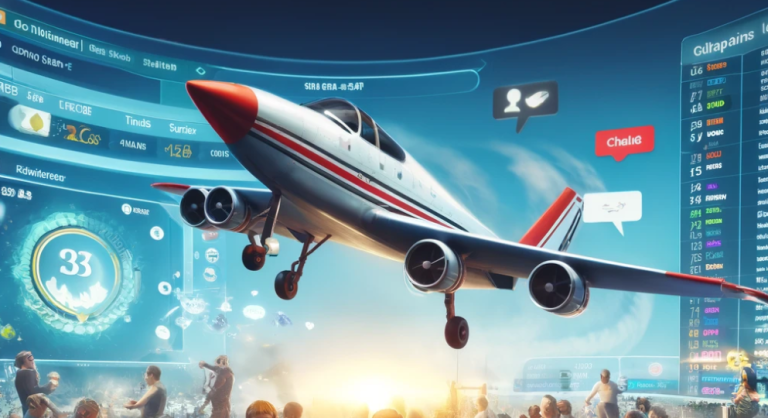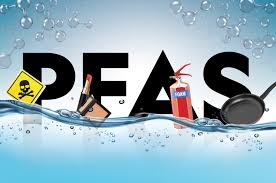How VR Safety Training Can Reduce Training Costs and Time
It’s clear now—Virtual Reality has broken free from being seen only as a gamer’s paradise or a techie’s dream. From an idea to indispensable – that’s the journey it took within the world of teaching folks how to stay safe.
The compelling capacity of VR to create entirely immersive, interactive environments has revolutionized how industrial, healthcare, and emergency services to name a few, approach the training of their teams. Gone are the days of one-dimensional training videos and paper assessments; VR is shaping the future of learning and development, one experience at a time.

This high-tech transformation can be traced back to the advent of VR as a concept in the late 20th century, evolving from clunky apparatuses to the sophisticated, user-friendly systems we see today. Historically, safety training has hinged on live demonstrations, physical practice, and classroom learning. The world of work training is getting trickier and sometimes downright dangerous. Enter virtual reality—a smart way to give folks a head-up on possible workplace hazards safely tucked away from harm’s reach.
Traditional Safety Training Cost
Any company decides to throw down cash for classic safety training, they’re making a hefty investment in peace of mind and protection. Costs are multifaceted, enveloping direct expenditures, such as hiring expert instructors, securing locations for in-person training, or producing paper-based materials. The indirect costs might include travel expenses for employees to attend training offsite, downtime incurred during training sessions, or even the environmental impact of printed materials.
The puzzle of matching up times for both trainers and those learning from them isn’t just tricky; it also ramps up costs due to overtime hours spent on vital safety lessons. Equipment, too, is a resource often used exclusively for training purposes, representing a substantial asset lying dormant for long stretches between training sessions.
Exploring the Savings with VR Safety Training
Transitioning to VR safety training can offer organizations palpable cost benefits. This method cuts out a lot of the heavy lifting usually involved in traditional training. Rather than paying for spaces, travel, and physical equipment, an organization can invest in a suite of VR devices that, once programmed, can be repeatedly used for thousands of sessions without recurrent costs.
In addition to hardware savings, VR reduces the requirement for physical resources and the number of repeated sessions needed for retention. Learners can practice procedures as often as necessary, with virtual resource use having no impact on real-world operations or inventory.
Enhancing Engagement and Knowledge Retention
The immersive nature of VR is unparalleled when it comes to engaging trainees. A user encapsulated by a three-dimensional learning environment is less likely to be distracted and more likely to absorb the information presented. Indeed, a study by the National Training Laboratory found that retention rates for lecture-style learning were at 5%, while hands-on learning scored a staggering 75%—a metric where VR can excel.
Such high engagement can translate to better knowledge retention which is the pinnacle of effective training. Through immersive scenarios that tickle every sense, VR doesn’t just teach—it cements concepts deep within our neurons for recall strength traditional methods could never dream of achieving.
Accelerating the Learning Curve
In traditional settings, acquiring the confidence and reflexes to respond to hazardous situations takes time—time for the training, time for the practice, and time for the experience to settle. VR radically shortens this learning curve through instant feedback and interaction, offering a hands-on experience from day one.
This immediate application contrasts sharply with standard methods that require learners to first understand the theory before slowly starting to apply it. VR allows learners to dive into the practice almost immediately, accelerating proficiency in safety protocols.
Scaling and Reusability of VR Training Programs
A significant advantage of VR training modules is their reusability. Once developed, the same program can be deployed across the organization, irrespective of geographic location, often only requiring language localization. Scaling education becomes a breeze with virtual reality. It promises one thing – every participant walks away with the same solid understanding and immersive experience.
With VR headsets, you can kick off training sessions wherever and whenever – they’re that easy to carry around! It doesn’t matter if an organization has ten employees or ten thousand; training modules can be accessed simultaneously worldwide, mitigating the need to coordinate schedules or locations.
Let’s not forget – adapting to bigger operations involves assessing if our crew, from rookies to veterans, is prepared for the challenges ahead. VR scenarios can be tailored or adjusted in complexity to suit different roles or experience levels without incurring the cost of producing entirely new training materials for each cohort.
Reducing Work Disruptions for Training
One of the most significant operational advantages of VR safety training is its ability to minimize disruptions to the regular workflow. When employees head off to learn new skills, it leaves a gap in the team that can slow things down and make service a bit bumpy. With VR, training sessions can be organized flexibly, allowing employees to undertake safety training during downtimes or in staggered groups, ensuring that business operations continue uninterrupted.
Furthermore, VR training can be operated in relatively small physical spaces and adapted to the trainees’ schedules. Imagine effortlessly running through complex simulations too tricky or messy for everyday spaces – that’s what this brings to the table.
VR Training Software: A Cost-Efficient Solution
Beyond hardware, the core of a VR training program lies in the software—the immersive content that guides the training experience. VR training software can range from off-the-shelf programs that cater to general safety training needs, to custom solutions developed for specific industry requirements. While custom programs might carry higher initial costs, the potential for such tailored training to prevent workplace accidents and enhance performance may justify the investment.
Moreover, leveraging VR software means updates and tweaks to training protocols can be rolled out quickly and without additional expense. This contrasts sharply with traditional training, where alterations could lead to re-printing manuals, re-hiring trainers, or re-purchasing updated equipment.
Safety and Risk Avoidance with VR Training
The safe environment of a VR training session cannot be overstated. Employees get to tackle risky situations head-on without facing any actual danger. This way, they can learn from mistakes without any consequences, unlike in real-world training where errors could lead to injuries or costly accidents.
The reduction in risk is not just limited to training. Imagine workers stepping out of VR training into the job site fully armed with top-notch alertness and clever ways to solve problems, making the workspace safer for everyone. Imagine this: a workplace where every improvement leads to fewer insurance bills, less need for worker’s compensation, and a safer day-to-day experience. It’s like hitting two birds with one stone – cutting expenses while keeping everyone safe.
Measuring ROI and Long-Term Financial Benefits
When an organization invests in VR for safety training, measuring the return on investment (ROI) can be paramount in justifying the expenditure. Fortunately, there are clear metrics to be considered—reduction in training times, cuts in travel and logistics overheads, decrease in safety incidents, saving on materials, and many more.
Case studies from various fields where VR training has been implemented show consistent cost savings alongside the qualitative benefits of better-prepared staff. After United Rentals started using VR for training, they saw fewer equipment mishaps and more employees sticking around.
Conclusion
Let’s face it – conquering the upscale real estate game is all about understanding what makes a location desirable and how to connect folks with their dream spaces amid shifting trends.
Ditching old-school workshops for VR simulations is like hitting two birds with one stone for firms aiming high. You end up pocketing extra time and money while outfitting your staff with top-notch safeguarding tactics that stick. Imagine slipping on a VR headset and stepping into a classroom where mistakes have zero consequences. That’s what firms do now to ramp up learning speeds, lock in knowledge better, and avoid throwing off the day-to-day workflow.
Now that this tech is everywhere, those hefty financial rewards aren’t just speculation—they’re practically knocking at our door. When you put your dollars into VR safety training, it’s more than an expense; it becomes the gift that keeps on giving as employees master hazard recognition and response. The future of safety training is here, and it is virtual.
Also Read: Innovative Event Technology: Exploring Cryo Jet CO2 for Dynamic Effects




